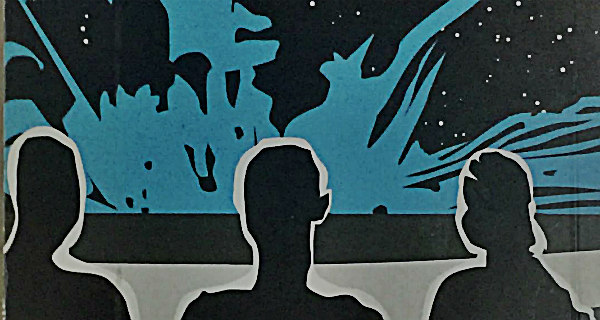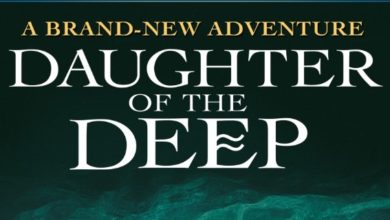Once Upon a Future: Speculative Fiction Anthology #2, 2010

 Nadav Miller Almog’s review of Once Upon a Future #2 science fiction anthology.
Nadav Miller Almog’s review of Once Upon a Future #2 science fiction anthology.
Writers of science fiction and fantasy in Israel are faced with considerable challenges. For one thing, in such a small country, the prospective local readership is relatively small. This leaves very little room for dreams of fame and riches—at least as long as one relies exclusively on the local audience. For another thing, writers must find a way to ‘localize’ their stories, instead of imitating fiction from the USA or from the UK, with their characteristic motifs and cultural background. Israel is a small and relatively young country. It has its own nature and rhythm, and its citizens have their own traditions and mentality. This means that stories which fit perfectly on the streets of Manhattan or London seem out of place in Tel Aviv or Haifa; and behavioral traits which are natural for the British or for North Americans come off as artificial and unconvincing when attributed to Israeli characters. Therefore, until recently, as the anthology’s editor, Ehud Maimon, states in his introduction, it seemed impossible to write science fiction and fantasy in Israel, or at least have them set in Israel.
This is the situation into which Once Upon a Future emerged two years ago. The challenge of compiling an annual anthology of short science fiction, fantasy, and speculative fiction stories by Israeli writers was taken up by the Israeli Society for Science Fiction and Fantasy. The anthology replaced the society’s journal, The Tenth Dimension, which until then had come out three times a year and was distributed to the society’s members. Before I continue, I feel obliged to mention that I, myself, am a registered member of the society, and am personally acquainted with a number of the writers. This did not make writing this review easy for me, but I have done my best to be as objective, and where needed, as constructive as I can.
I must admit that when I first heard that the anthology was coming out, I was not quite sure what to expect—especially because I was rather fond of the journal it replaced. However, having read this year’s anthology, it seems to me that the choice to focus on a single annual publication turned out to be a wise one after all. The society’s new agreement with Odyssey Publishing House in the production of the second issue of the anthology seems like a step in the right direction, too, towards establishing its status as a serious anthology.
The twelve stories which made it into the second issue are a mix, ranging from hardcore science fiction to fantasy and even horror. Most of the stories manage to find a voice that is distinctly Israeli, and avoid the clichés that made Israeli science fiction and fantasy very difficult to enjoy in the past. For example, archetypal humoristic or over-patriotic characters which used to frequent many works have been replaced by much more complex and current ones. Also, though some of the works touch on historical events, they do not focus on them but on everyday life. In this regard, the first three stories stand out, as they are the only ones which are not set in Israel and which do not discuss anything particularly Israeli in any way. They are not any less enjoyable, but they do take away from the unifying characteristic which might otherwise have been attained.
In “Generation E: The Emoticon Generation,” by Guy Hasson, a concerned father decides to use his skills as a reporter in order to answer a question that has preoccupied the minds of parents for countless generations: “What are my children up to?” When he ‘borrows’ his fifteen-year-old daughter’s cell phone and tries to read her text messages, he finds them written in long sequences of unintelligible icons. Not only is the protagonist not ‘hip,’ ‘cool’ or in any other way in touch with his daughter’s generation, they do not even seem to be speaking the same language. In an attempt to overcome the generation gap, he sets out to investigate the icons’ meaning. The results are thought-provoking, amusing and disturbing all at once.
Hasson creates the kind of story that sends you to your favorite search engine to make sure that it is just a work of fiction. Part of this effect derives from the author’s choice to write it like a journalistic column. I liked the tone, the flow and the balance of the work. The father’s half sarcastic, half appreciative voice is convincing, amusing and very readable. The social critique was nicely transmitted—clearly but not too forcefully.
Finally, only two things bothered me: as the anthology’s editor wrote in the story’s introduction, “it is set in the United States, but it is relevant everywhere.” I completely agree with this observation, which makes me wonder, why did it have to be set in the US? I grant that it is the author’s prerogative to decide where to set his stories according to his creative vision, and that the narrative works as it is. But watching our own teenagers, here in Israel, I could not help but feel that the story could have been just as successful, and perhaps even more powerful, had it been set here. Having said that, if “Generation E” was written with an international audience in mind Hasson probably made the right choice. Another minor problem is the story’s closing sentence. In my honest opinion, this sentence adds nothing and even seems somewhat awkward. Aside from these two critiques, the piece is a tasty appetizer for the rest of the collection.
“Second Contact,” by Yoav Landsman, is good old-fashioned hardcore science fiction, complete with spaceships, a ‘Starfleet,’ and aliens on the side. It depicts humanity’s first contact with aliens and the ensuing reaction to it, leading up to the second encounter. I do not normally go for hard science fiction. I tend to be easily bored by longish technical descriptions of different technologies, planets, and endless parades of names. I find it even worse in stories written in Hebrew, in which such descriptions very easily become cumbersome. For this reason, it was not without reservations that I began to read this story. As I anticipated, it was not easy to follow. The timeframe was not initially clear, and relatively quick transitions between perspectives, along with liberal use of made-up names, did not help much either. In this respect, I feel the “Second Contact” could have benefited from a little more intrusive editing—especially the kind of trimming that would have helped make a very good story excellent.
Despite the problems noted above, as the plot progressed, the author’s technique became clear, and as it did, I was pleasantly surprised to discover that I became thoroughly immersed in the story. Landsman’s take on the all-too-familiar theme of first contact is delightfully grim, and at times, surprisingly vicious—and not in the way one would expect. This, in itself, made me like the story. The futuristic technologies felt believable and well thought out, as did the characters and their distinctly human reaction to the depicted events. Finally, I think literary works are measured not only in terms of their authors’ technique, but in terms of what they leave you with—that is, if they leave you with anything at all. “Second Contact,” stayed with me long after I finished reading it. It made me think. What is more, I suspect it made me think precisely about what the author intended me to think, and I cannot help but appreciate that. As I said, I don’t normally like this kind of sci-fi, and it is highly unlikely I will change my mind. However, I know I will definitely look to see more of Yoav Landsman’s work in the future.
Having enjoyed the previous story as much as I did, I was happy to discover that the next one, “Voices,” by Keren Landsman, takes place in the same world as “Second Contact.” This perhaps has something to do with the fact that Keren and Yoav Landsman happen to be married. I can only imagine what it is like to have two sci-fi writers in one house and have the opportunity to share the creative process in this way.
Though “Voices” picks up, as it were, where the previous story left off, it is very different and stands on its own. Keren Landsman focuses on the human aspects of space communication based on telepathy, as has been established in the previous story. The same fears and grim atmosphere pervade in this story as well, as it depicts the relationship between a spaceship captain and his spouse, a communications officer, in charge of the ship’s telepath and communications. The story, on the whole, is very well written, and the depiction of the communications officer’s bond with the female telepath is especially fascinating and engaging. The question of whether the telepath should be regarded as a sentient human being or merely a part of the ship becomes a moral question, and the author presents it elegantly, avoiding the temptation of choosing sides. Though “Voices” does not put the same emphasis on technology as “Second Contact,” it incorporates it quite seamlessly. In short, “Voices” reads loud and clear.
My only reservation regarding this story has to do with its ending. It is very difficult to explain this without providing spoilers. Therefore, all I will say is that it seems to me that the heroine’s choice, after having gone through everything she did, seems somewhat unlikely. This is a shame, because except for this, it is one of the strongest in the anthology.
As I have stated above, “Generation E,” “Second Contact,” and “Voices” do not present a local perspective, and in this respect, they form a trio which does not quite blend with the rest of the works in this volume. This is not so much a judgment as an observation. Also, the absence of an “Israeli angle” is less marked in the latter two stories, because they are set in space, and their protagonists have no clear nationality. This makes sense because they deal with issues that have to do with the nature of human nature in general. Just to be clear, the question of locale and nationality is not central to the rest of the stories, and yet, each in its own way, they show how science fiction, fantasy and speculative fiction can be written and set everywhere, even in Israel.
Yael Furman‘s story, “A Stone in His Hands,” is one of the best works in the anthology if not the best. It tells of a strange museum, populated by living statues, and run by “the curator,” a mysterious artist and art collector. The curator makes everything in the museum operate like clockwork to his own satisfaction, as well as that of the visitors and even the statues. However, the museum’s peaceful routine is interrupted when a suspicious couple decides to investigate the mystery of the lifelike statues, and reveal their secret at any cost.
In the hands of a less capable writer, the story could have very easily fallen into the traps of cliché. Though at times it does come dangerously close to doing so, the author has managed somehow to maneuver elegantly away from all the danger zones, while keeping the plotline flowing steadily towards the surprising conclusion—and it was truly surprising for me. The characters were engaging, and the fact that the living statues are not the story, but merely characters in a narrative, which is itself touching and not unpleasantly macabre added to the work’s overall quality. The imagery in “A Stone in His Hands” makes the narrative so vivid it flows almost like a movie, and I could easily imagine it becoming one. In conclusion, this is the kind of story I would happily read again and again. Well done.
“The Femmedohickey,” by Tom Sivan, is a humble sci-fi story about a young woman who goes with a friend to fix her car at a “do-it-yourself” garage. This (sadly) fictional garage is run by women and equipped with advanced technologies, which allow its customers to fix their cars by themselves without having to be subjected to the dubious pleasure of communicating with male car mechanics. I truly love such stories, because I believe science fiction does not have to be all fireworks, super-everything and epic adventure. It seems to me that science fiction and fantasy writers all too often forget that ninety-nine percent of the time and for ninety-nine percent of any population, life is not epic. This does not mean, however, that it cannot be magical and every bit as satisfying to write and read about.
Besides having a very cool name, Sivan’s story is also well-structured, its energy persistent throughout, and (like the garage it describes) it delivers the required technical information in a clear, precise and friendly manner. The descriptions of the relevant technologies are just sufficient to transmit the idea, without overburdening the readers. All in all, it is a fun, fluent and even empowering read. However, and despite my appreciation for ‘humbler’ stories, I still would have loved to see the author do more with “The Femmedohickey”—perhaps add more tension or dilemma.
Issues like gender roles and perception, as well as women’s self-empowerment, have been at the center of many works, and there is a lot more that can be done with the ideas Sivan presents in the story. It would be nice to see the story expanded upon, and I believe it would work very well as a chapter or a scene in a larger narrative. It might also be worth mentioning that though the author’s feministic message comes through, and though this problem is much more acute for women than for men, there are many men (myself included) who neither feel confident about fixing their cars nor enjoy the experience of a visit to the garage for much the same reasons as women do not.
In “Podix-Joy,” by Raz Liberman, nanotechnology has enabled a company named Podix to develop the ultimate tool to help people understand what makes them happy. At first glance, the product seems ideal, after all, who does not want to be one hundred percent happy? As Liberman’s main character finds out, however, coming to terms with what makes one happy is not always easy.
Once again, though the story is science fiction, it is very down to earth. The application of advanced technologies is manifested in everyday-life, rather than in an-epic-confrontation-between-good-and-evil-which-will-decide-the-future-of-mankind. . . The way in which society reacts to technology and interacts with it is also natural and convincing.
In terms of technique, “Podix-Joy” flowed very well, and was just the right length for its premise. The main ideas were introduced clearly and naturally, were developed nicely and led steadily to the conclusion. The plot itself was amusing and even a little romantic. In my opinion, though, the story could have done just as well with slightly more subtlety and a little less reference to the Reuvenov sisters, which after the third time felt overdone. All in all, a very nice and enjoyable contribution to the anthology.
In “Soul Mates,” by Lili Daie, two six year-old twins, a boy and a girl, suffer from a mysterious medical condition: a shared consciousness. As a result whenever one is awake, the other one falls asleep, and vice versa. The children’s parents have all but given-up hope of finding out the origin of the problem, let alone a solution to it. The story provides a look into the family’s life, and provokes some very interesting questions regarding the nature of identity. It is very distinctly a Lili Daie story, in terms of technique, themes and aesthetic devices. It is rich in language and content, and contains satisfying descriptions of complex ideas and situations. The plot is challenging, intricate and beautifully woven. The reader witnesses how consciousness slips from one protagonist to the other, and how the children handle the situation and fill the blanks in their life. Daie aims very high, cutting herself no slack, and still manages to deliver. It is very plain to see that she has carefully worked out every aspect of the story. As a reader, it feels good to sense that an author has invested so much in you.
The only thing which dampened my enjoyment of “Soul Mates,” is that it became rather clear quite early on with which character the author identified more. This, in itself, is not necessarily a bad thing, except that it does take away from the suspense, because it makes the ending a little predictable. Having read some of Daie’s previous publications, I believe she could have avoided this with ease.
“Drops of the Night,” by Hadas Misgav, is beautiful and rather unconventional. In its own way, it is unique in the anthology and adds a very different tone to it. The story is not only set in Jerusalem, but also told by Jerusalem—no mere feat, which Misgav handles very well indeed. Misgav shows the kind of mastery of Hebrew which is sadly too too rare these days. The old and poetic language makes this insight into the thoughts of the city quite satisfying. Despite the beauty of its language, however, I could not help but feel that the story itself could have been further developed. As it is, though it has a very clear conclusion, I finished reading wondering where the rest of it is? What happened next? I mean this both as a critique and as a compliment.
Reading “Since Permission was Granted,” by Hagai Averbuch, I could not help but think of Lovecraft. A man loses his way while wandering the streets of Jerusalem after dark and finds himself the target of supernatural forces, as old as the biblical flood. Averbuch’s use of scripture is convincing and nothing short of fascinating. Also impressive is the eerie atmosphere of the old city, which Averbuch sets up skillfully. Anyone who has ever walked the streets of religious neighborhoods in Jerusalem, and knows first-hand the mysterious alien quality they can posses, would especially get goosebumps. The language of the story is very rich and beautiful, too. Thus, both the locale and the style make this the perfect choice to follow Misgav’s story.
What I did not understand about “Permission” was the author’s choice to use old-fashioned Hebrew in a story which presumably takes place in the present, and involves characters who should be roughly in their thirties. Though this sort of language fits the Lovecraftian quality of the story, there seems to be no call for it in terms of the plot. What I also found problematic was the relative decline in the story’s energy towards the end, where it should be at its strongest. This decline could probably have been solved by shortening the last two scenes before the finale.
“Soup with Croutonies,” by Rotem Baruchin, is a lovely sensitive fantasy story, which everyone who has ever loved their grandparents will identify with and appreciate. I can’t say it is a little story, because there is nothing little about it. It follows the life of the heroine, Roni, from infancy to early adulthood, focusing on her relationship with her grandmother, an immigrant and survivor of the Second World War.
Like Roni’s grandmother, Baruchin skillfully and confidently blends everything in just the right measure – the relationships between family members, the sweetness of childhood and the bitterness of adulthood, Israeli historical events and everyday events which would be familiar to any Israeli, and of course, a smidgen of magic. This is the kind of story you want to take time to read slowly and thoughtfully, to eat rather than gobble up. One of the things I found very appealing about the story was its structure, particularly the transition between the different stages in the protagonist’s life. Baruchin’s approach to magic was also charming. In its own quiet way, the story blurs the line between the self and the magical. Where does the ‘true’ self end and magic begin—if magic is indeed separable from the self for people endowed with magical powers?
As its name hints, Lavie Tidhar‘s story, “The Funny Pages,” is based on comic book motifs, namely, superheroes. In this story, Israel has its own superheroes and villains, and Dr. Meshuge (Dr. Crazy in Yiddish), the megalomaniac evil genius, has come up with a new plan that may change the face of the Middle East forever. It may also undermine the nature of the relationship between super-powered individuals and the rest of society. “The Funny Pages” successfully combines universal and Israeli archetypes in an amusing and provoking manner.
Tidhar’s super-powered heroes and villains combine classic superpowers with original ones, and I especially liked Orchestra, whose super-powers you can probably imagine. Also interesting was the way in which the author describes the relationships between super-powered individuals, who are at once divided into factions and united in their special status. The apparent arbitrariness and futility of the struggle between their two factions, with the Israeli-Arab dispute in the background is provocative, but in a good way. In conclusion, the story flows nicely and without a glitch from start to finish, living one thoughtful yet amused. I wonder what it would be like if it was actually made into a comic book. . .
“Turret,” by Nir Yaniv, takes place in the same world as his novel, The Tel Aviv Dossier, co-written with Lavie Tidhar. To be honest, the story went straight over my head. . . with a tank! That takes some doing. It opens with a collision between a flying tank and a helicopter, and continues with a post-apocalyptic Tel Aviv in which a mountain has sprouted out of nowhere. This story is quite surreal, and I am not at all sure what to make of it. On the one hand, it is very confidently and beautifully written. Its structure is unconventional, with special reference to the time-flow of the plot. The combination of the morbid and the humorous in “Turret” is like candy-flavored poison and grants the story a very special tone and an eerie disorienting quality. People who like their sci-fi or fantasy a little on the dark-side are likely to be interested in this story.
On the other hand, “Turret” does not seem to me to be able to stand on its own. I have not read Tel Aviv Dossier and it is quite possible that if I had, much of what seemed unclear and inconsistent about the story would have been clarified. From a quick websearch it appears like that may be the case—at least to some extent. However, I believe this is not the kind of story that the author can presuppose its audience will have any previous information about its world and the preceding events. My feeling is that with some more intrusive editing the story could have soared like a missile, but in its current form, it simply flies off course and disappears.
First published in The Portal
Title: Once Upon a Future #2
Editor: Ehud Maimon
Publisher: Israeli Society for Science Fiction and Fantasy in cooperation with Odyssey Publishing House
Publication Date: September 2010.
ISBN: 0057400000727
Price: 84 NIS (paperback); Distributed for free to ISFSFF members
Online Price: 42 NIS




